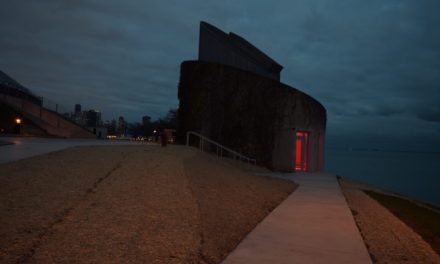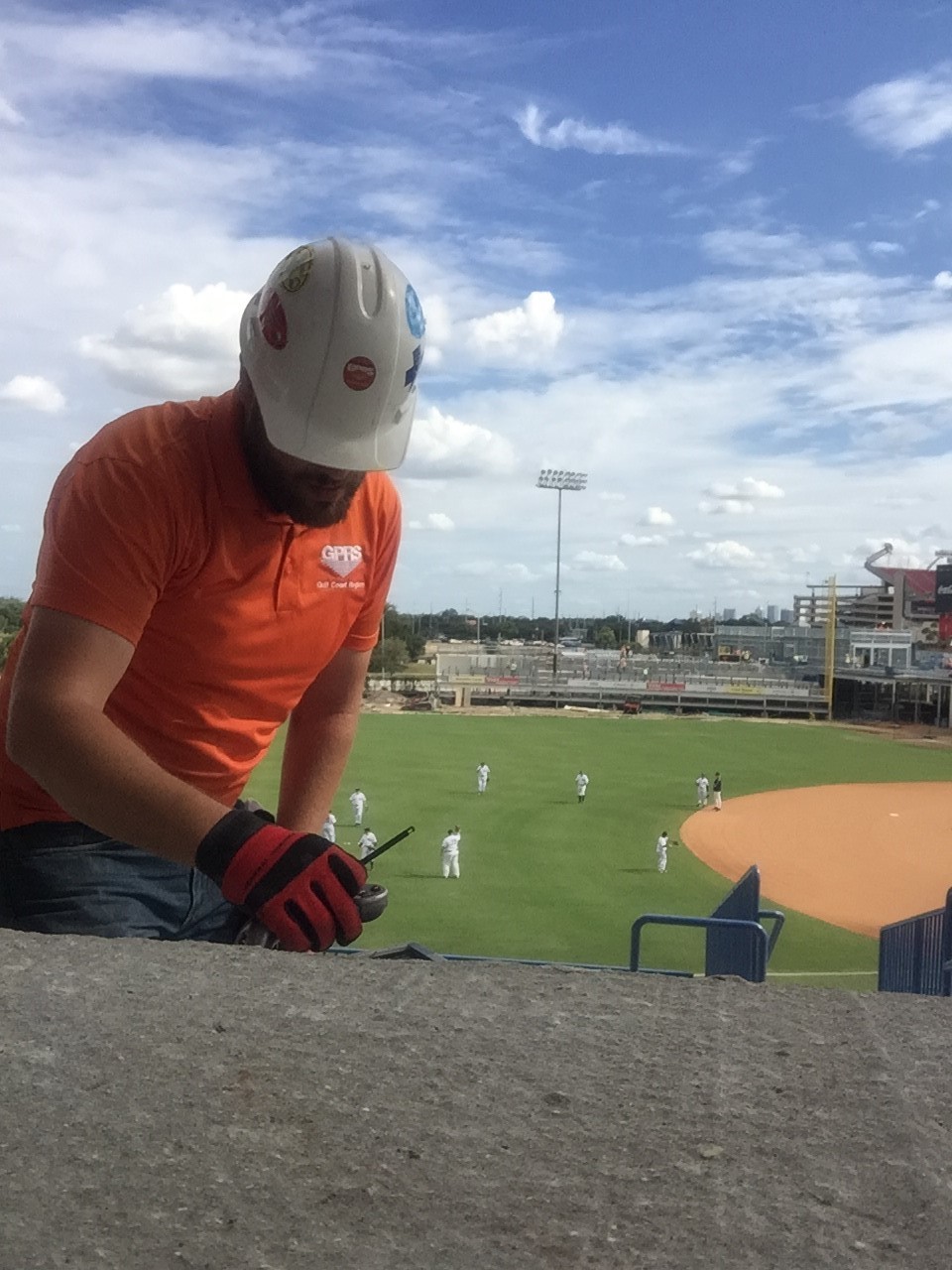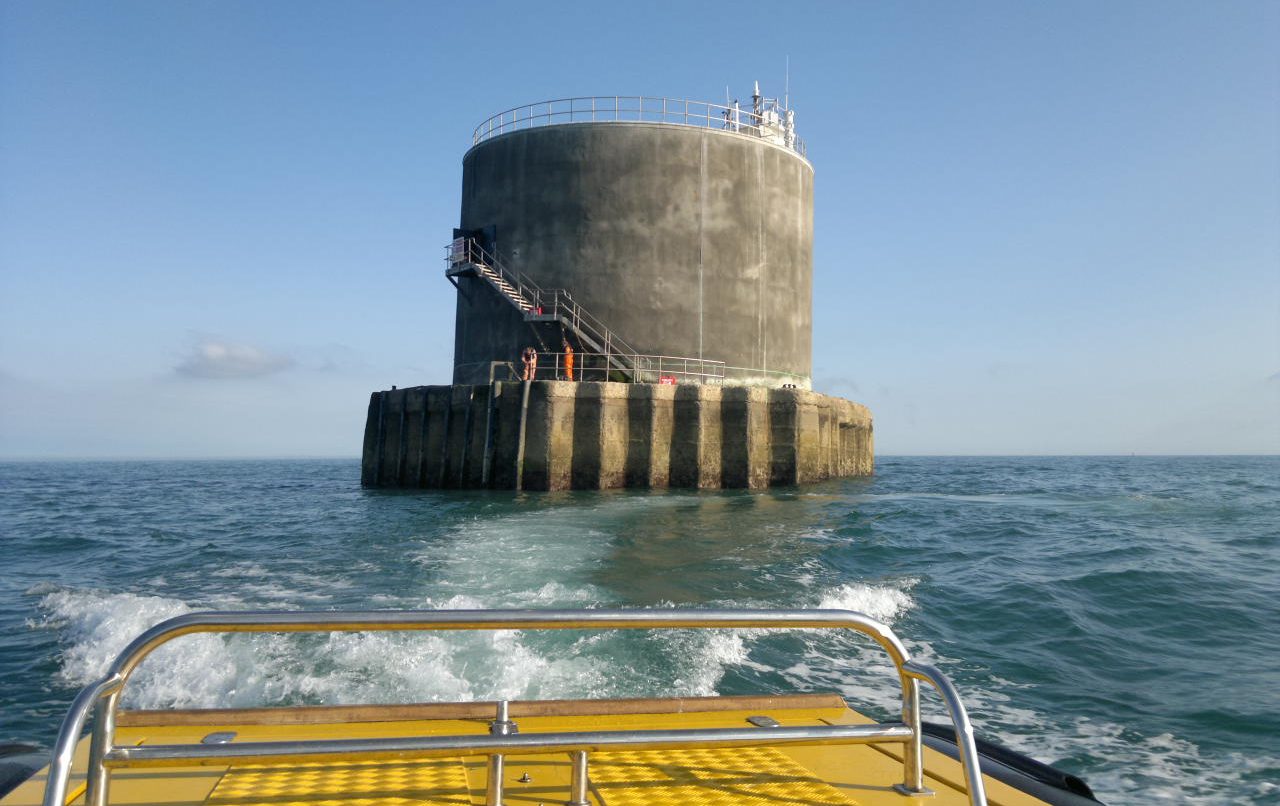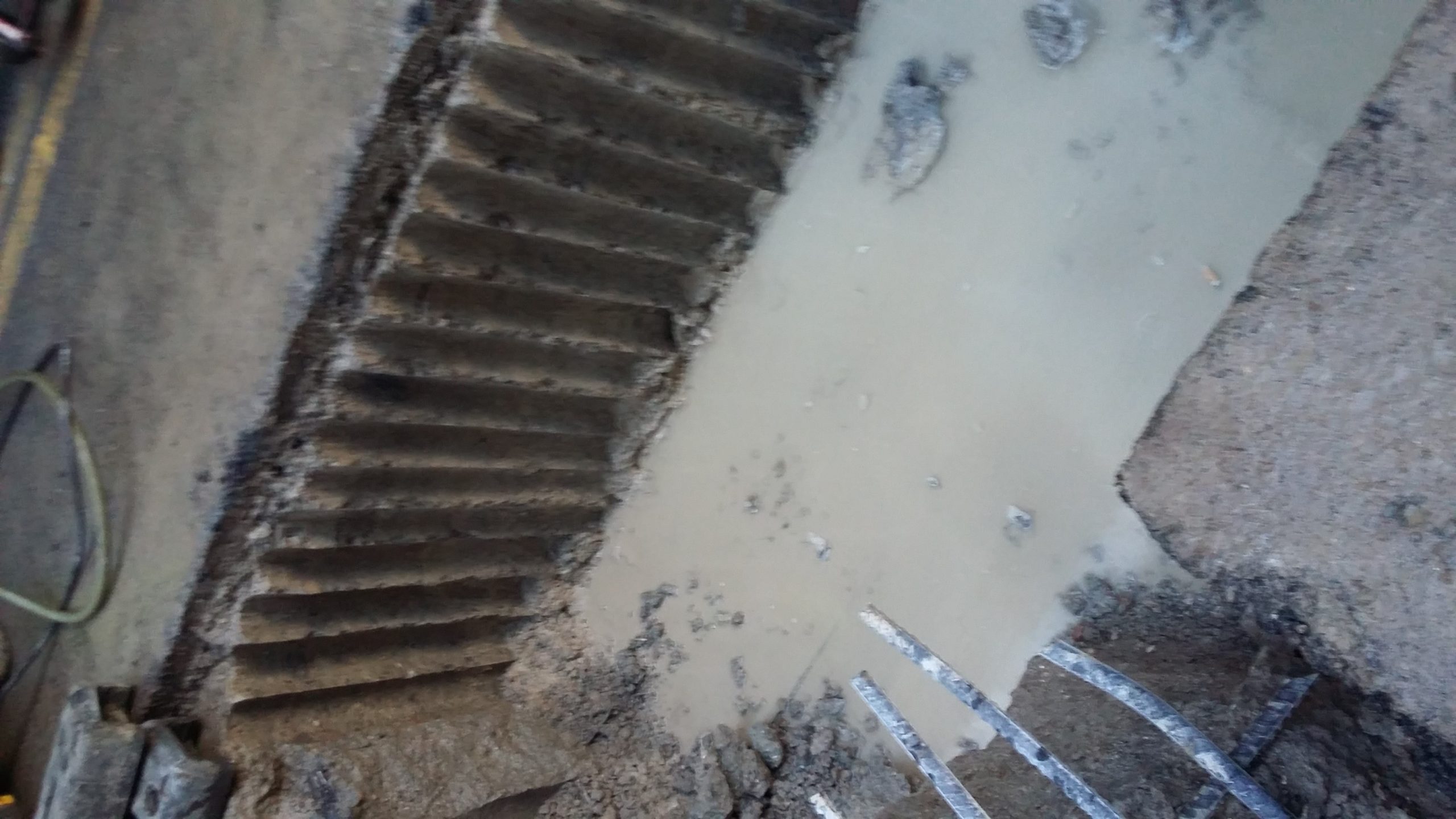
Glasgow Station Upgrade
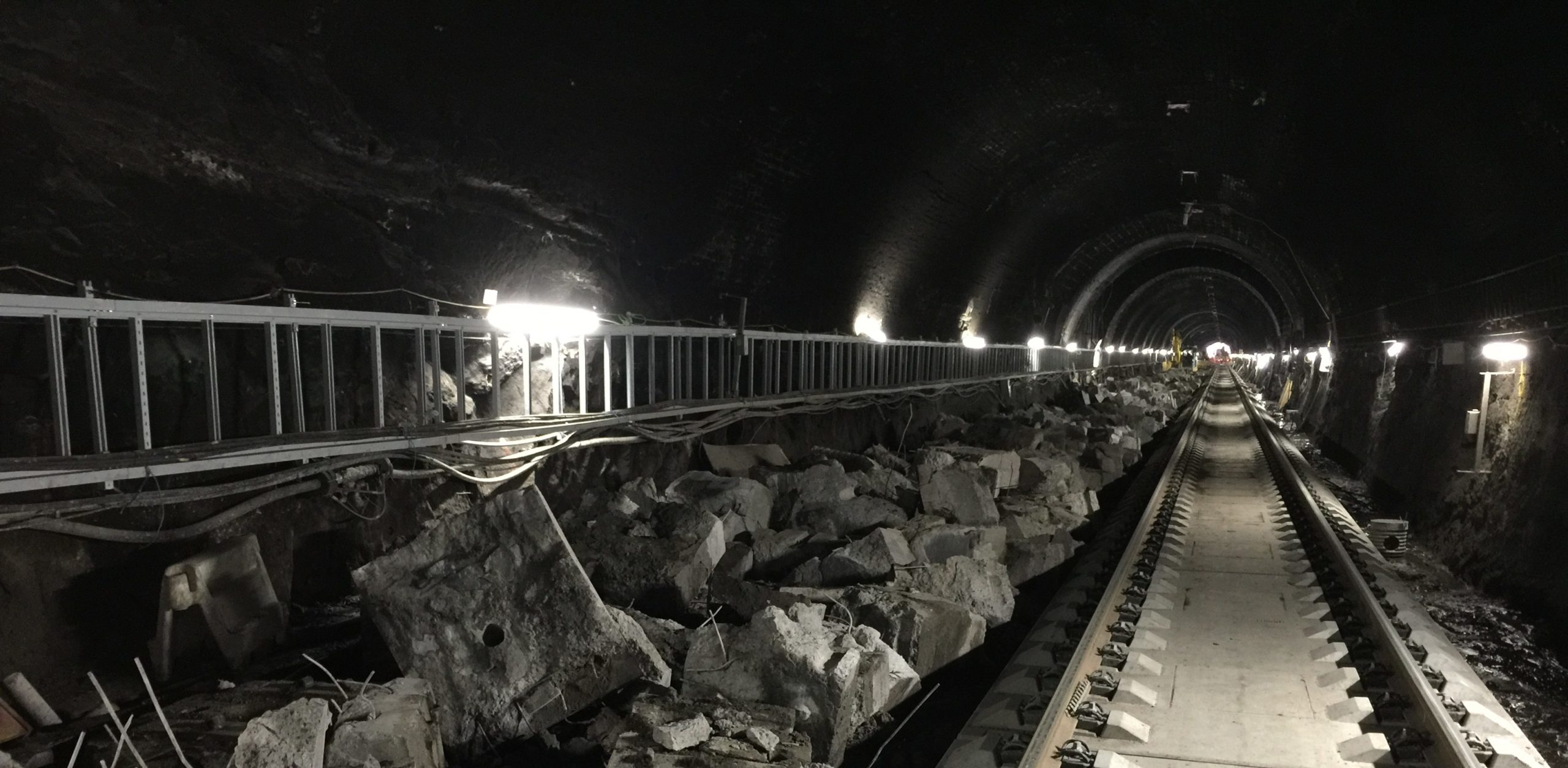
Diamond Drilling Specialist Provides Light at the End of Tunnel
Earlier this year, key infrastructural work at one of Scotland’s busiest railway stations was completed on budget and ahead of schedule, thanks to a CSDA member company.
West Lothian-based Core Cut Ltd. (Corecut) was chosen by general contractor Story Contracting, which had been awarded a rail track slab replacement contract as part of the £742-million ($915-million) Edinburgh to Glasgow Improvement Program (EGIP). The specialty sawing and drilling company was to take the lead role in the removal of 10,000 tons of existing concrete slabs as the station’s tunnel underwent significant improvements.
Glasgow Queen Street Station has an estimated 17 million “entries and exits” per year. The £60-million ($74-million) high level tunnel upgrade is considered to be the most significant feat of engineering along the Edinburgh-Glasgow line in 170 years. With a contract value of £1.25 million ($1.54 million) for the diamond drilling work, it represents the largest project of its kind undertaken in Scotland to date.

Operators core drilled almost 8,500 holes 500 millimeters (19.7 inches) deep in the slab.
For 20 weeks between March and August 2016, the top level of Glasgow Queen Street Station was effectively closed to allow for the major engineering work to take place. A large portion of this work was to renew 1,800 meters (5,906 feet) of a concrete track slab that measured between 500 millimeters (19.7 inches) and 750 millimeters (29.5 inches) thick, which carried the rails through the Queen Street tunnel. The tunnel upgrade works consisted of:
- 140 days of continuous round-the-clock working
- More than 150 staff on-site every day
- More than 500,000 man hours
- The removal of 10,000 tons of existing concrete slab
- Installation of 4,000 meters (13,123 feet) of new rails
The existing concrete track slab within the tunnel had been in place for 40 years and, due to the impact of continuous use and the effects of water infiltration, was showing signs of significant degradation. The tunnel upgrade allows for faster, longer electric trains to operate from the station. Because the new line is electrified, the need for the upgrade work was heightened—faster speeds achieved by electric trains are likely to accelerate the deterioration of the slab.
Corecut won out over a number of other contractors in a highly competitive tender process. The contractor was involved in the planning of the project nearly two years prior to undertaking the actual work, including on- and off-site trials. The diamond drilling work took place during the 20-week project, between March 20 and July 1, 2016. The work was done in two phases, pre-blockade (March 20 to April 8) and main blockade (April 11 to July 1) totaling nearly 900 man days on-site—all without a lost time incident.
Pre-blockade works consisted of core drilling almost 8,500 holes measuring 112 millimeters (4.4 inches) in diameter and 500 millimeters (19.7 inches) deep. This facilitated the use of hydraulic bursting equipment to crack the track slab following 2,750 meters (9,022 feet) of track saw cutting to both the up line and down line. This cutting separated the concrete track slab from the walls.

Transverse cuts in the track slab were made using track-mounted wall saws.
The second phase commenced to complete the main blockade works and included longitudinal saw cuts to split the concrete track slab from the tunnel walls and divide it into two halves. Hydrostress WS2226 track-mounted wall saws were used to perform the 2,750 metres (9,022 feet) of cutting. Hydraulic bursting—an alternative method of removing reinforced or mass concrete, brickwork, or natural stone—-was also carried out. Corecut’s remote controlled “Robolition” Brokk 260 demolition robot was used to remove 10,000 tons of existing concrete, reducing it to manageable sections for removal by train.

Slab sawing techniques were used to separate the concrete slab from the tunnel wall.
Main blockade works consisted of slab saw cutting and transverse track-mounted saw cutting of ladder beam sections using a CC22/12 slab saw and track saw from Tyrolit. Approximately 3,700 meters (12,139 feet) of 520-millimeter-deep (20.5-inch) longitudinal slab sawing was completed between the rails on each line, then over 1,500 3.5-meter-long (11.5-foot) and 520-millimeter-deep (20.5-inch) transverse cuts in the ladder beam sections of the track slab.
The contractor then conducted hydraulic busting and breaking to accommodate the replacement of track slab, then completed the drilling of dowel holes through the new structural slab and into the rock below. A Corecut operator utilized the Robolition Brokk 260 fitted with a hydraulic rock drill. Upon installation of the new concrete slab, core drill operators made 3,500 holes to a depth of up to 3 meters (9.8 feet), helping to anchor the concrete to the tunnel bedrock.
The work was conducted on a 24/7 basis by rotating teams, ensuring no downtime and this commitment led to the contractor delivering six days ahead of schedule.
Managing Director of Corecut, Finlay Crocker, said,
“The Queen Street tunnel represented a significant challenge for our team, which worked diligently in difficult conditions across almost 100 days to complete the work. Given the environment and tight deadlines we had to contend with, it is particularly pleasing to us that we were able to complete the work safely, within budget and nearly a week ahead of schedule. It is testament to the quality and work ethic of those involved.”
Eddie Esdale, Location Scheme Project Manager for Story Contracting was equally pleased with the outcome. “It was a fantastic effort throughout by everyone involved at Corecut. A very innovative solution was proposed and delivered. Without it, the project may not have progressed as smoothly as it did. A professional approach from all operatives on-site ensured the safe delivery of the works ahead of program.”
Completion of this work now means that existing class 380 electric trains will be able to operate at optimum performance when they begin running on the Edinburgh – Glasgow Line in December 2016. Furthermore, new Hitachi electric trains will begin operating on the Edinburgh – Glasgow via Falkirk High route in fall 2017. The new slab meets modern specifications and should last 60 years without any major intervention.
Company Profile
Core Cut Ltd. is based in West Lothian, Scotland, United Kingdom, with a support location in Sheffield, England. The contractor has been a CSDA member company for 20 years and has been in business since 1978. Core Cut Ltd. has 40 operators and offers the concrete cutting services of core drilling, slab sawing, hand sawing, wall sawing, wire sawing, selective demolition, floor polishing and preparation and hydrodemolition.
Resources
General Contractor:
Story Contracting
Sawing and Drilling Contractor:
Core Cut Ltd.
West Lothian, Scotland
Phone: 44-1506 854 710
Email: finlay@corecut.co.uk
Website: www.corecut.co.uk
Methods Used: Slab Sawing, Core Drilling, Wall Sawing











